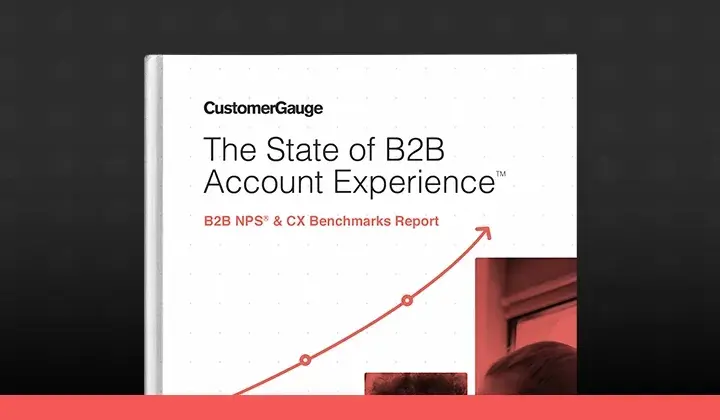All major companies in this day and age collect customer feedback, it would seem absurd if they didn’t, and yet it’s not absurd that these companies don’t respond to this feedback.
The information that is gathered within customer feedback tools such as the Net Promoter System® is used to improve future interactions, products or services, but what about the customer that gave this information? They took their time and gave their opinion, they said what could be improved or what was so great it should stay the same. Consultants get paid for their advice, why don’t customers receive a little compensation for their time?
Customers that inform you about bad experiences or faults with a product, do so because they want THEIR experience to improve. Feedback then is there to improve the experience of future customers and also those that need it now.
Reaching out to customers is not just an act of courtesy solely for the customer’s benefit, it is recognition that you have heard them, you are listening and you do care. The result – customers that will think, “Wow, who are these guys, no company ever responds to my feedback”.
Responding to customers benefits both the big picture and the individual customer
Some customers will score you a 10 out of 10, others may spit words of fire, and some may just hover in the middle, but each and everyone should be contacted to some degree. Some customers will take priority and have their responses personally addressed, while with others you may not have the time. The key is to acknowledge each customer and let them know you are listening.
- Responding to feedback is a two-fold measure that looks to understand and further investigate systemic problems that may exist, and improve the experiences of individual customers. Although it is necessary to respond to customers in order to improve the individual’s customer experience. Solving individual problems does not remove the root causes of many problems; it merely puts out individual fires rather than eliminating the cause of those fires. At a company wide level improving customer experience is looking for patterns within feedback, finding those issues that customers mention the most or issues that will have the greatest positive result. In this sense of customer experience, responding to customers is not done for the individual’s experience but to further investigate issues raised, so that change may be made within an organization.
- Improving individual experiences includes tackling negative feedback, which can be a daunting and scary undertaking, but it is a group that needs to be contacted. For those customers that rank companies negatively are at a high risk of leaving and by getting in contact and searching for solutions the aim is to extend the lifetime of the customer. Furthermore, dissatisfied customers have the potential to spread negative word-of-mouth with people being twice as likely to converse about bad customer experiences than good experiences and spread to twice as many people. Responding to feedback is not just a measure to retain customers but to also enhance a positive identity amongst non-customers.
- Contact also those that rate you positively, for it is just as important. Many may think this is superfluous; why waste time on those which definitely don’t need saving and what is there even to say to those that already love us? The answer, a lot! Not responding to those who give you a high rating means missing out on a great deal of extra revenue. For customers that rate a company highly will readily refer you positively to friends and family. For example, Nielsen has found that 92% of consumers believe recommendations they receive from friends and family. The graph below puts into context the power of referrals in relation to other mediums within both B2C and B2B customers.Without responding to customer feedback, positive sentiment is wasted potential. Although no immediate guarantee of referral, not contacting customers means lost opportunities. For although highly receptive to new ideas, without engaging these customers very little of this potential will convert by itself. Think of ways then to incentivize customers to talk about you and convert those referrals into new customers.
Examples from the field: Depending on your situation, you may reward your existing customers with vouchers for bringing in new customers or find ways to improve the ease at which referrals can become customers – take Simyo’s initiative for example.
Furthermore, for the same reason that customers will increase their likelihood of recommending a company, the happier a customer is with a company the more open they are to the idea of further purchases. Responding to such feedback provides opportunities for companies to further upsell and cross-sell products and services to this group of customers. By utilizing customer data alongside feedback, companies can accurately decide how and what can be upsold or cross-sold to customers – find what is missing in their experience in order to make them even happier.
When deciding upon which order to address customers there is no one rule. The distribution of your feedback should guide your priorities. For if you have only 10% of customers giving strong negative feedback but 50% sitting in the middle, then much more of your customer experience focus should be on creating experiences that delight rather than putting out fires.
A simple thank you
Respond to customers then anyway you can. Although reaching out to every single customer is not always possible, send out an email or automated text thanking them and outlining improvements based on their feedback.
A simple example could proceed as follows:
Hi (Customer Name),
Thank you for sharing your feedback with us. It is greatly appreciated, as it really helps us to serve you better. From all the feedback received, what did we learn?
The waiting time within our call centers is too long for many of our customers, and in light of this we are working on ways to shorten the waiting times of our customers.
We are looking forward to receiving more feedback from you in the future!
Kind regards, (Your name)
In summary
Responding to customer feedback provides a huge range of benefits along the spectrum of customer experience. Responding to customers means activating positive referrals and squashing negative ones, customer retention through issue resolution, upsells and cross-sells that leave customers delighted, and in the big picture delving deeper into structural customer experience problems.
Not responding to feedback is one of the six rookie mistakes of the Net Promoter System. If you want to find out if you are making any of the other five mistakes, check out our ebook here.


